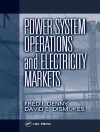Hydraulic fracturing, commonly referred to as ‘fracking, ‘ is a technique used by the oil and gas industry to mine hydrocarbons trapped deep beneath the Earth’s surface. The principles underlying the technology are not new. Fracking was first applied at the commercial level in the United States as early as 1947, and over the decades it has been applied in various countries including Canada, the UK, and Russia. The author worked with engineering teams as early as the mid-1970s in evaluating ways to improve oil recovery from this practice.
By and large fracking was not an economically competitive process and had limited applications until the early 2000s. Several factors altered the importance of this technology, among them being significant technological innovations in drilling practices with impressive high tech tools for exploration, well construction and integrity, and recovery along with discoveries of massive natural gas reserves in the United States and other parts of the world. These factors have catapulted the application of the technology to what is best described as the gold rush of the 21st century, with exploration and natural gas plays proceeding at a pace that seemingly is unrivaled by any historical industrial endeavor. But this level of activity has invoked widespread criticism from concerned citizens and environmental groups in almost every nation across the Globe.
This outstanding new volume offers the industry a handbook of environmental management practices that can mitigate risks to the environment and, through best practices and current technologies, to conform to the current standards and regulations that are in place to provide the world with the energy it needs while avoiding environmental damage. For the new hire, veteran engineer, and student alike, this is a one-of-a-kind volume, a must-have for anyone working in hydraulic fracturing.
Table des matières
Preface xi
Acknowledgements xix
Author and Editor Biographies xxi
1 Hydraulic Fracturing Overview 1
1.1 Technology Overview 1
1.2 Benefits, Environmental Deterents, Hurdles and Public Safety 6
1.3 U.S. Resources and Standing 27
1.4 Worldwide Levels of Activity 36
1.5 The Role of Water 50
2 Oil and Gas Regulations 53
2.1 U.S. Environmental Regulations 53
2.2 Historical Evolution of Regulations Affecting Oil and Gas 59
2.3 RCRA Exemptions 66
2.4 Permitting Rules 73
3 Management of Chemicals 85
3.1 Memorandum of Agreement Between the U.S. EPA and Industry 85
3.2 Chemicals Used 86
3.3 Safe Handling and Emergency Response to Spills and Fires 92
3.4 Storage Tanks 127
3.5 Risk Management 133
3.6 Establishing a Spill Prevention, Control and Countermeasures Plan 141
4 Water Quality Standards and Wastewater 153
4.1 Overview 153
4.2 Water Quality Criteria, Standards, Parameters, and Limits 155
4.3 Wastewater Characterization 156
4.4 Wastewater Management Alternatives 187
4.5 Water Treatment Technologies 193
4.6 Deep Well Injection of Wastes 387
4.7 Overall Assessment of Wastewater Management Alternatives 393
5 Water Utilization, Management, and Treatment 401
5.1 Introduction 401
5.2 Water Use by the Oil and Gas Energy Sector 402
5.3 Overview of Water Management Practices 403
5.4 Wastewater Treatment Technologies 411
5.5 Alternatives to Conventional Wastewater Treatment 416
5.6 Project Management 419
5.7 Economics of Wastewater Treatment 426
5.8 State-of-the-Art Water Management Project 430
5.9 Special Challenges in the Oil and Gas Energy Sector 433
References 435
6 Well Construction and Integrity 437
6.1 Overview 437
6.2 API Good Practices for Well Design and Construction 440
6.3 Integrity Failure 446
6.4 Abandonment and Closure 465
6.5 Best Practices for Site Operations 469
References 474
7 Managing Air Pollution Discharges 477
7.1 The Problem 477
7.2 Methodology of Air Pollution Control 483
7.3 Remote Sensing and Monitoring 486
7.4 Leak Detection and Repair 493
7.5 Use of Flares 509
7.6 Fugitive Dust Discharges 596
7.7 Compressor Stations 640
7.8 Dehydrators 679
8 Macro Considerations of Environmental and Public Health Risks 705
8.1 Overview 705
8.2 The Challenges of Managing Water Resources 707
8.3 The Challenges of Managing Air Quality 716
8.4 The Challenges of Managing Greenhouse Gas Emissions 729
8.5 The Challenges of Managing Man-Made Seismicity 737
Index 743
A propos de l’auteur
Nicholas P. Cheremisinoff is a chemical engineer with more than 40 years of industry, R&D and international business experiences. He is the co-founder of No Pollution Enterprises. He has led and implemented various technical many areas of the world for such organizations as the U.S. Agency for International Development, the U.S. Trade & Development Agency, the World Bank Organization, and the private sector. Over his career he has served as a standard of care industry expert on a number of litigation matters, and he has authored or edited over 160 technical reference on sound environmental management, safe work practices and public protection from harmful chemicals. He is cited in U.S. Congressional records concerning emerging environmental legislations, and is a graduate of Clarkson University.
Anton R. Davletshin is Program Manager at No Pollution Enterprises, a firm specializing in standard of care assessments. He oversees sampling and research programs, and conducts historical environmental impact assessments that aid in forensic reconstruction of legacy pollution problems. His expertise also extends to application of air dispersion simulations using the EPA-approved AERMOD program used in the evaluation of community impacts from point and area sources of emissions from within industrial complexes. He is a FLIR certified infrared thermography scientist, and oversees teams performing inspection of industrial sites. A graduate of Virginia Polytechnic Institute, he holds a degree in construction management.












